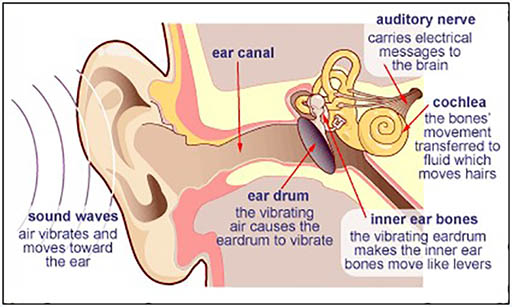Resource 2: Sound waves – teacher notes
![]() Background information / subject knowledge for teacher
Background information / subject knowledge for teacher
What is sound?
Sound is produced whenever an object vibrates. The object could be a string on a guitar, a flat surface such as a drum skin, the diaphragm in a loudspeaker or even the vocal cords.
Sound transfers energy away from the vibrating object, and it needs something to travel through. Sound cannot travel through a vacuum – in space, no one can hear you scream!
Speed of sound
Sound travels at different speeds through different substances. In general, the denser the substance, the faster sound travels through it. Sound travels at 5,100 m/s through steel, 1,480 m/s through water and 330 m/s through air. This is much slower than the speed of light.
Light travels nearly a million times faster through the air than sound does. This is why you hear the thunder clap after you see lightning in a thunderstorm, and why the sound of someone hammering some distance away does not match the hammer blows.
Echoes
Sound can reflect from the surface of an object. This is called an echo. Hard surfaces reflect sound better than soft surfaces.
Loudness
The loudness of a sound depends upon the size of the vibrations. Big vibrations transfer more energy than small vibrations, so they are louder.
Pitch
A sound can range from a high to a low pitch (high to low note). The pitch of a sound depends on how fast the original object is vibrating. If there are lots of vibrations per second, the frequency is high and the sound has a high pitch. If there are few vibrations per second, the frequency is low and the sound has a low pitch.
Checkpoint
The table summarises some features of sound waves and vibrations.
| Size of the vibrations | Number of vibrationsin each second | |||
| Small | Big | Low | High | |
| Sounds like | Quiet | Loud | Low pitched | High pitched |
| Example | Whispering | Shouting | Man talking | Child talking |
Hearing
We hear because sound waves enter the ear and cause the eardrum to vibrate. Three small bones in the inner ear carry these vibrations to the cochlea (pronounced ‘kok-lee-a’). The cochlea contains tiny hairs, which send messages to the brain when they vibrate.

A diagram of the ear
Hearing damage
Our hearing is easily damaged and as we get older we find it more difficult to hear very low or very high sounds. The three small bones may join together as we age, so they are not so good at passing along the vibrations from the eardrum to the cochlea.
Loud sounds can eventually damage our hearing. If the eardrum is damaged, it may repair itself again, but if the cochlea is damaged, the damage is permanent. People with damaged hearing may find it difficult to follow conversations and may need a hearing aid.
Resource 1: Sound story



